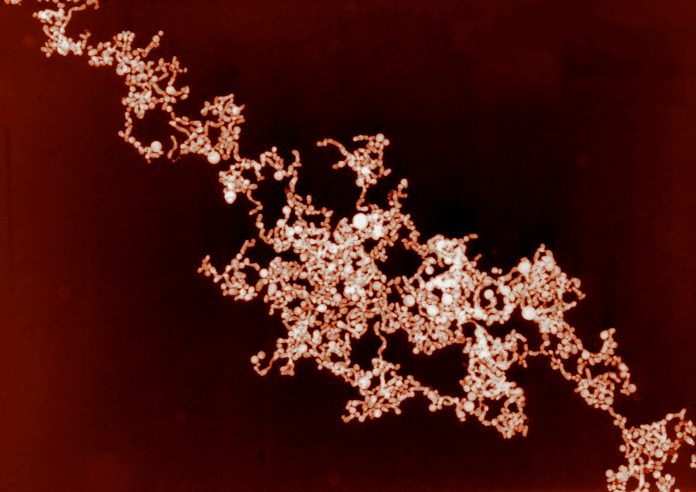Cecilia Van Cauwenberghe from Frost & Sullivan’s TechVision Group focuses on nanomaterials by looking at the challenges and opportunities around the laser ablation in liquid environment (LALE) technique
Laser ablation in liquid environment (LALE) has been used as a straightforward technique to build a broad spectrum of nanostructured materials or nanomaterials. This singularly versatile technique enables to overcome the main challenges faced when the mechanism of synthesis remains as the interaction between the laser beam, the irradiated solid target and the liquid environment (Abdelghany et al., 2018).
Indeed, a wide range of nanostructured magnetic materials can be prepared by using new synthesis pathways based on LALE technique, taking into consideration that the precursors used come directly from the ablation of a solid target and the liquid environment. The utilisation of LALE technique during the synthesis process necessarily involves non-equilibrium conditions. High temperatures and pressures, above 100 Kelvin and 100 Pascal, respectively, are generated as a consequence of the interaction between the pulsed laser beam and the solid target.
In fact, the micro and nanostructure of the prepared materials strongly depend on the fluency of the laser beam on the target, as well as, the solvent utilised, in addition to the concentration of reactants in the liquid. The laser beam directly influences the size distribution of the synthesised particles.
The concerns broadly addressed
Like many other synthesis techniques used to build nanostructured materials, the LALE technique also presents some drawbacks. First of all, it is important to highlight that during the chemical synthesis, metal precursors, reductant agents and stabilising chemicals, are present all together in the synthesis solution with the aim to ensure stable chemical-synthesised colloids. Nevertheless, many of these products and/or byproducts may produce adverse effects on human health. Standards and regulations establish that such potentially harmful chemicals must be separated and removed from the final nanocolloids before their final utilisation.
Overall, LALE technique presents the lower risk and environmental impact, due to the fact that both metal precursors and reductants are not needed. Moreover, nanocolloids offer higher levels of purity in comparison with conventional chemical synthesis methods (Sportelli et al., 2018). The technique not only avoids the utilisation of reductants but also can fragment metal targets without recurring to capping agents (Akter et al., 2018). This processing feature makes the LALE technique intrinsically safer than conventional methods by dramatically reducing the risk of contamination of the nanocolloids.
Furthermore, in the use of the obtained nanostructured materials for antimicrobial applications, nanoparticles generated using the LALE technique demonstrate a lack of ligands and typical stabilisers on their surface, hence exhibiting higher reactivity and antimicrobial effects in comparison other chemicals (Kaphle et al., 2018). Even a step beyond, nanoparticles created based on LALE technique can be conjugated in situ with biomolecules, thus undergoing a more efficient performance than nanomaterials conjugated ex situ (Sportelli et al., 2016).
Conversely, the main drawbacks of LALE technique are related to high investment and operative costs due to the utilisation of a particularly expensive laser system, as well as, the considerable amounts of energy required to obtain good ablation efficiency.
Final remarks
Even when exhibiting some disadvantages in terms of costs and operation, so far, laser ablation in liquid environment (LALE) constitutes the most efficient and straightforward technique to create nanostructured materials in a safe and effective manner for both human health and environment.
Acknowledgements
I would like to thank all contributors from the industry involved with the development and delivery of this article from the TechVision Group at Frost & Sullivan.
References
1. Abdelghany, T.M., Al-Rajhi, A.M., Al Abboud, M.A., Alawlaqi, M.M., Magdah, A.G., Helmy, E.A. and Mabrouk, A.S., 2018. Recent advances in green synthesis of silver nanoparticles and their applications: About future directions. A review. BioNanoScience, 8(1), pp.5-16.
2. Akter, M., Sikder, M.T., Rahman, M.M., Ullah, A.A., Hossain, K.F.B., Banik, S., Hosokawa, T., Saito, T. and Kurasaki, M., 2018. A systematic review on silver nanoparticles-induced cytotoxicity: Physicochemical properties and perspectives. Journal of advanced research, 9, pp.1-16.
3. Kaphle, A., Navya, P.N., Umapathi, A. and Daima, H.K., 2018. Nanomaterials for agriculture, food and environment: applications, toxicity and regulation. Environmental chemistry letters, 16(1), pp.43-58.
4. Sportelli, M., Izzi, M., Volpe, A., Clemente, M., Picca, R., Ancona, A., Lugarà, P., Palazzo, G. and Cioffi, N., 2018. The pros and cons of the use of laser ablation synthesis for the production of silver nano-antimicrobials. Antibiotics, 7(3), p.67.
5. Sportelli, M., Volpe, A., Picca, R., Trapani, A., Palazzo, C., Ancona, A., Lugarà, P., Trapani, G. and Cioffi, N., 2016. Spectroscopic characterization of copper-chitosan Nanoantimicrobials prepared by laser ablation synthesis in aqueous solutions. Nanomaterials, 7(1), p.6.











